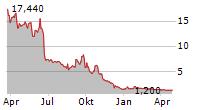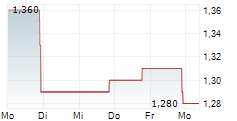
Both novel bifunctional (SON-1411) and monofunctional (SON-1400) fusion proteins exhibit wild-type binding to the IL-18 receptor (IL-18Rc), coupled with undetectable binding to the inhibitory IL-18 binding protein (IL-18BP)
IL-18 has significant importance for cancer immune-oncology and combination with IL-12 on Sonnet's FHAB platform which Sonnet believes could present an important oncology possibility
The lock-and-load flexibility of the FHAB platform offers the bifunctional payload capability of adding another synergistic biologics target to IL-18 generating multiple novel cancer drugs
PRINCETON, NJ, Nov. 06, 2024 (GLOBE NEWSWIRE) -- Sonnet BioTherapeutics Holdings, Inc. (NASDAQ:SONN) (the "Company" or "Sonnet"), a clinical-stage company developing targeted immunotherapeutic drugs, announced today that the United States Patent and Trademark Office (USPTO) has issued U.S. Patent No. 12,134,635 entitled "Interleukin 18 (IL-18) Variants and Fusion Proteins Comprising Same," covering two of its novel drug candidates, SON-1411 (IL-18BPR-FHAB-IL12) and SON-1400 (IL-18BPR-FHAB), each containing a modified version of recombinant human interleukin-18 (IL-18BPR = Binding Protein Resistant). The patent carries a term effective until June 2044.
"The issuance of this intellectual property is an important milestone that we believe provides significant differentiation from competitors trying to tap the full biological potential of IL-18, either alone or in combination with IL-12. IL-18 is a key cytokine that, when combined synergistically with IL-12, has the potential to be an important therapeutic asset for oncology and cell-based therapy," commented Pankaj Mohan, Ph.D., Sonnet Founder and Chief Executive Officer.
SON-1411 is a proprietary bifunctional fusion protein consisting of IL-18BPR combined with single-chain wild-type IL-12, linked to Sonnet's Fully Human Albumin Binding (FHAB®) platform, which has replaced SON-1410 as a development target. SON-1400 is a monofunctional fusion protein comprising the same IL-18BPR domain linked to the FHAB. FHAB extends the half-life and biological activity of linked molecules by binding native albumin in the serum and targets the tumor microenvironment (TME) through high affinity binding to glycoprotein 60 (gp60) and the Secreted Protein Acidic and Rich in Cysteine (SPARC).
IL-18 can regulate both innate and adaptive immune responses through its effects on natural killer (NK) cells, monocytes, dendritic cells, T cells, and B cells. IL-18 acts synergistically with other pro-inflammatory cytokines to promote interferon-? (IFN-?) production by NK cells and T cells. Systemic administration of IL-18 has been shown to have anti-tumor activity in several animal models. Moreover, tumor-infiltrating lymphocytes (TILs) express more IL-18 receptors than other T cells. However, IL-18 clinical trials have shown that, although it is well tolerated, IL-18 has poor efficacy in the treatment of cancers, most likely due in large part to the high co-expression of IL-18 binding protein (IL-18BP) in the TME. In particular, IL-18BP serves as a "decoy receptor" that binds to IL-18 with higher affinity, compared with the IL-18Rc complex, thereby causing a negative feedback loop with IL-18 and inhibiting IL-18-mediated TIL activation. Thus, there exists a potential for the discovery of IL-18 variant compositions that could harness the therapeutic potential of IL-18 for the treatment of cancers.
Sonnet's strategy for amino acid modifications to rIL-18 was based on a compilation of literature review, 3D X-ray crystallography structures, and computer modeling analysis. Subsequently, certain IL-18 variant sequences were synthesized, engineered into expression constructs and manufactured at small scale in either CHO cell culture or E. coli. Highly purified milligram quantities of SON-1411 or SON-1400 were analyzed in vitro for IL-18Rc or IL-18BP binding activities, respectively, using the HEK-Blue and Bright-Glo Luciferase IL-18Rc reporter assays. In vitro results for at least one variant of IL-18 showed equivalent binding to the IL-18 Rc, compared to the wild-type IL-18 reference molecule, concomitant with no or reduced binding to IL-18BP.
The known MOA of IL-18 inhibition by IL-18BP is reviving the importance of clinical applications of IL-18. IL-18BP has been shown to be elevated in cancer patients, thus nullifying the clinical applications of IL-18. Sonnet is developing two novel bifunctional cytokine molecules, IL-18BPR-FHAB-IL12 and IL-18BPR-FHAB, both of which contain a unique IL-18 domain that does not bind the inhibitor IL-18BP but still maintains full IL-18 and IL-12 bioactivity. The clinical application of these mono or bifunctional fusion proteins could potentially expand immunotherapy applications for cancer patients.
About SON-1411
SON-1411 is a candidate immunotherapeutic recombinant drug that is closely related to and has replaced SON-1410. SON-1410 links an unmodified single-chain human IL-18 and an unmodified IL-12 with the albumin-binding domain of the single-chain antibody fragment A10m3. The key difference between SON-1410 and SON-1411 is that in the latter, there has been novel modification of the IL-18 domain via mutagenesis to retain wildtype binding to the IL-18 receptor (IL-18 Rc) while inhibiting or abolishing binding to the IL-18 binding protein (IL-18 BP). The A10m3 scFv was selected to bind both at normal pH, as well as at the acidic pH that is typically found in the TME. The FHAB technology targets tumor and lymphatic tissue, providing a mechanism for dose sparing and an opportunity to improve the safety and efficacy profile of IL-18 and IL-12, as well as a variety of potent immunomodulators that can be added using the platform. Interleukin-12 can orchestrate a robust immune response to many cancers and pathogens. Given the types of proteins induced in the TME, such as SPARC and gp60, several types of cancer such as non-small cell lung cancer, melanoma, head and neck cancer, sarcoma, and some gynecological cancers are particularly relevant for this approach. SON-1411 is designed to deliver IL-18BPR and IL-12 to local tumor tissue, turning 'cold' tumors 'hot' by stimulating IFN?, which activates innate and adaptive immune cell responses and increases the production of Programed Death Ligand 1 (PD-L1) on tumor cells.
About Sonnet BioTherapeutics Holdings, Inc.
Sonnet is an oncology-focused biotechnology company with a proprietary platform for developing targeted biologic drugs with single or bifunctional action. Known as FHAB (Fully Human Albumin Binding), the technology utilizes a fully human single chain antibody fragment (scFv) that binds to and "hitch-hikes" on human serum albumin (HSA) for transport to target tissues. Sonnet's FHAB was designed to specifically target tumor and lymphatic tissue, with an improved therapeutic window for optimizing the safety and efficacy of immune modulating biologic drugs. FHAB platform is the foundation of a modular, plug-and-play construct for potentiating a range of large molecule therapeutic classes, including cytokines, peptides, antibodies and vaccines.
Sonnet's lead program, SON-1010, or IL-12-FHAB, is in development for the treatment of solid tumors and ovarian cancer. SON-1010 is being evaluated in an ongoing Phase 1/2a study through a Master Clinical Trial and Supply Agreement, along with ancillary Quality and Safety Agreements, with Roche in combination with atezolizumab (Tecentriq®) for the treatment of Platinum-Resistant Ovarian Cancer (PROC). The Company is also evaluating its second program, SON-1210, an IL12-FHAB-IL15 for solid tumors, in collaboration with the Sarcoma Oncology Center to commence an investigator-initiated and funded Phase 1/2a study for the treatment of Pancreatic Cancer.
The Company's SON-080 program is a low dose of rhIL-6 in development for CIPN and DPN. SON-080 demonstrated encouraging results in a Phase 1b/2a clinical trial, being well tolerated with no evidence of a pro-inflammatory cytokine response. Sonnet is currently seeking partnership opportunities to support a Phase 2 trial.
Forward-Looking Statements
This press release contains certain forward-looking statements within the meaning of Section 27A of the Securities Act of 1933 and Section 21E of the Securities Exchange Act of 1934 and Private Securities Litigation Reform Act, as amended, including those relating to the outcome of the Company's clinical trials, the Company's cash runway, the Company's product development, clinical and regulatory timelines, market opportunity, competitive position, possible or assumed future results of operations, business strategies, potential growth opportunities and other statements that are predictive in nature. These forward-looking statements are based on current expectations, estimates, forecasts and projections about the industry and markets in which we operate and management's current beliefs and assumptions.
These statements may be identified by the use of forward-looking expressions, including, but not limited to, "expect," "anticipate," "intend," "plan," "believe," "estimate," "potential," "predict," "project," "should," "would" and similar expressions and the negatives of those terms. These statements relate to future events or our financial performance and involve known and unknown risks, uncertainties, and other factors which may cause actual results, performance or achievements to be materially different from any future results, performance or achievements expressed or implied by the forward-looking statements. Such factors include those set forth in the Company's filings with the Securities and Exchange Commission. Prospective investors are cautioned not to place undue reliance on such forward-looking statements, which speak only as of the date of this press release. The Company undertakes no obligation to publicly update any forward-looking statement, whether as a result of new information, future events or otherwise.
Investor Relations Contact:
JTC Team, LLC
Jenene Thomas
908-824-0775
SONN@jtcir.com




